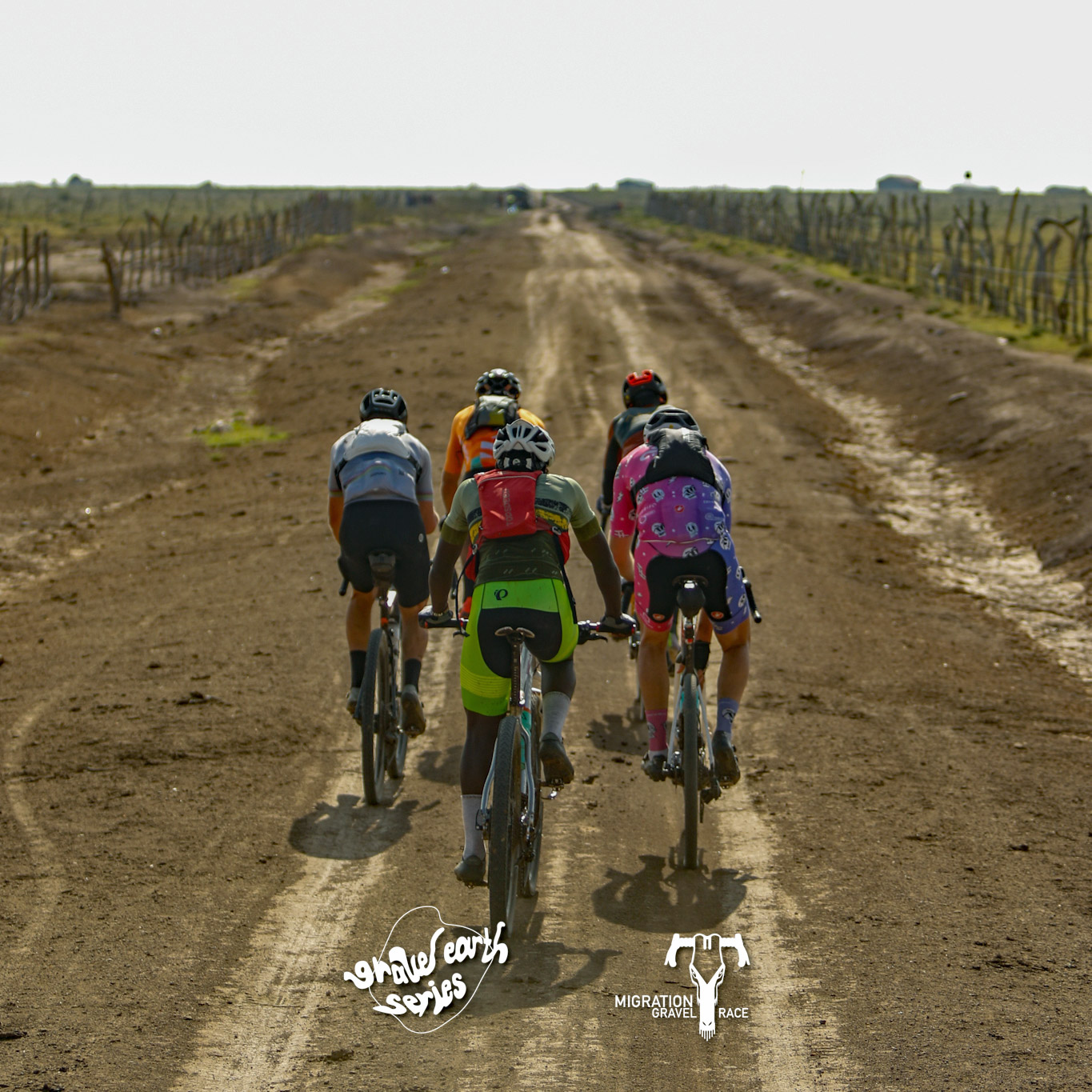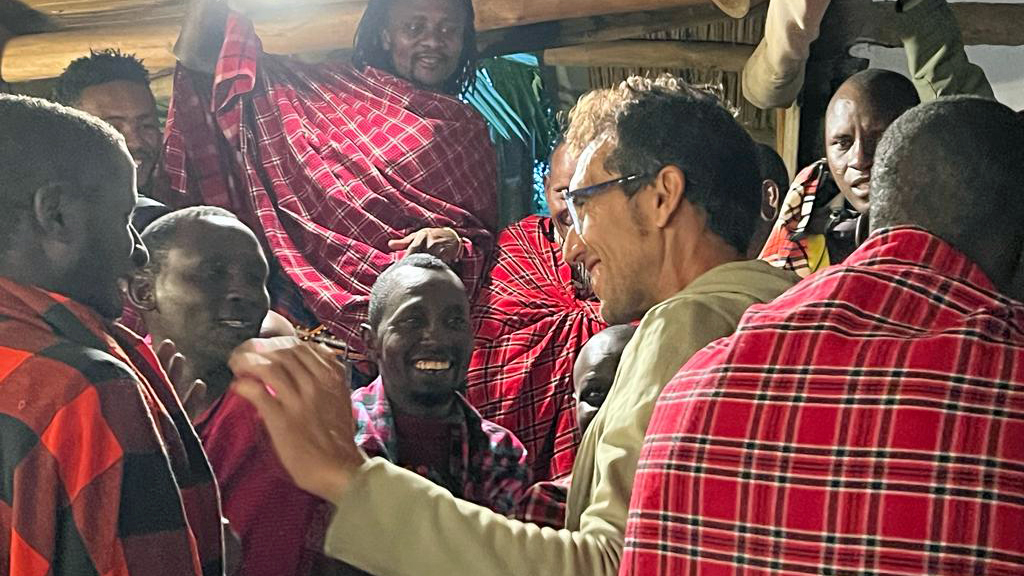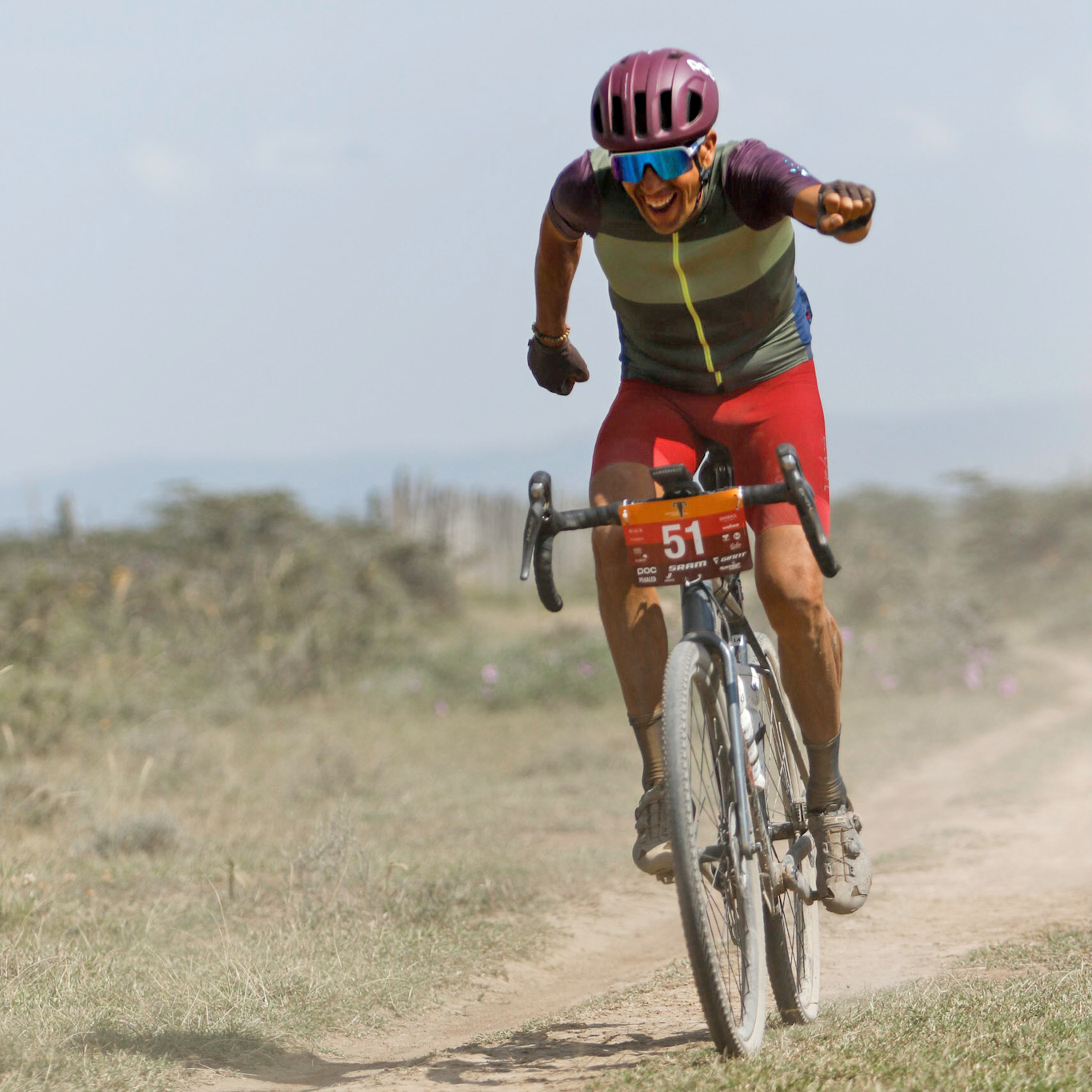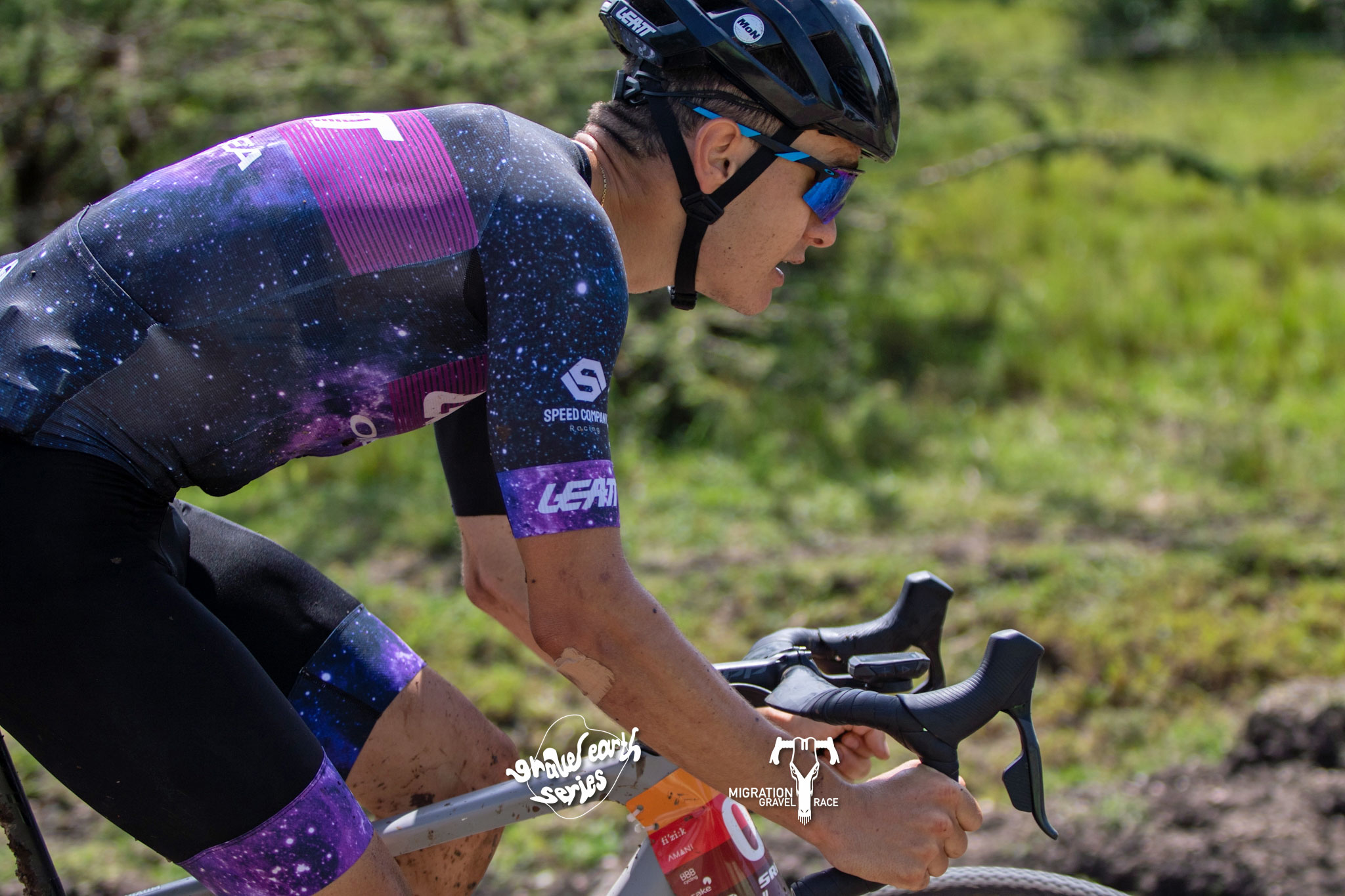“You all come here to this race as one person but after the race, a different person will be going home” was one of the memorable comments that Migration Gravel Race co-organiser Mikel Delagrange said to the participants of the 2023 event at their pre-race briefing. Intrepid gravel racing fan Jorge Padrones headed to Kenya earlier this year to take part and sent in this amazing write-up.
When I applied to take part in this race, I saw the organisation was describing it as the wildest gravel race in the world and I thought about the wildlife we would be spotting on our rides, which has been true, but not only that, it is wild in all the senses! Sometimes I would say the race is brutal - the course, the terrain, the distances and obviously the environment, so welcome to the wildest gravel race in the world or should I say Karibu in Swahili.
The adventure started with a five-hour trip from Nairobi to the Maasai Mara, the national park that we would be circumnavigating and crossing during the race. Even for those of us that had already been in Nairobi for a couple of days, during the journey we got a taste of what was coming up with the colourful and vibrating small villages that we drove through on our journey. The next day we would be on our gravel bikes on that same terrain - undoubtedly an experience and an adventure for all of us.
“You all come here to this race as one person but after the race, a different person will be going home.”
On arrival at our first camp (the accommodation during the race is in tents), lunch was waiting for us. After lunch, our schedule included building our bikes and event registration, where we would receive our bib numbers and our cap as Migration Gravel Race participants. After that, a shakedown ride was planned. It was just an appetiser of what we could expect during the following days - a 10 km ride to check our bikes, in which we could see the terrain was very rough and rocky. Tyres no less than 45 mm should be used on this race I realised, while looking at my poor 38mm choice! During our shakedown ride we spotted something on the horizon just 100 meters away from us – there were elephants, zebras, wildebeests and giraffes. This short ride ended up being a mini safari but done on our bikes - an amazing experience that left all of us breathless. I can still see the facial expression on some of my fellow riders when we were noticing we were right out in the middle of the wilderness.

On the first of our nightly briefings, Mikel, one of the founders of the race said something that kept going around in my mind for the next few days - “You all come here to this race as one person but after the race, a different person will be going home.” I was somehow curious while incredulous at the same time as I have already done many adventures in many countries. I can only say he was right - this is an adventure that marks you. Also, the other phrase that caught my attention in the briefing was ‘Expect the unexpected’. They were also right.

We woke up early to start the first stage and the first part of our journey through the Maasai Mara. The peloton rolled out at 7.00 am on the dot and there was something we could tell straight away - despite how long the race was and taking into account the hardness of the coming stages, my fellow riders did not come for a walk in the park! People were flying - on this first stage, the fastest riders averaged 35 km/h. Stage 1 was a super-fast stage with a total distance of 140 km. The tracks were not so bad and Stage 1 set the tone for the coming days.
A briefing before dinner explained to us about the monster stage that was lined up for the next day, 170 km with 3000 meters of climbing.
As this race was a point-to-point trip, we moved camps with all our stuff and our bags every day. When we finished riding, a well-deserved lunch was waiting for us. Afterwards, we witnessed a Maasai welcome show to give us some knowledge of the local culture. A briefing before dinner explained to us about the monster stage that was lined up for the next day, 170 km with 3000 meters of climbing.

Obviously, with that prospect in our minds, it was difficult to have a deep sleep knowing what was awaiting. We departed at 6.30 in the morning with the first light of the day. Given that this stage could take all 12 hours of daylight for some of the riders, we needed as much time as possible. I have to say I was a bit disappointed on day one as everything was fast tracks and quick gravel roads, but on Stage 2, everything changed and started to take shape.
After a fast 40 Km, we hit the first big climb and we kept climbing for more than 20 km after that. We rode an endless succession of singletrack, either up or down for more than half of the stage which made the distance pass very quickly. The singletracks were amazing, passing through the middle of the jungle and then up to around the 3000 meters mark, only to descend through the jungle again and again. Overall, it was a very fun stage – it was long and hard, but we enjoyed it a lot.
So then for some rest and to make some mechanical adjustments to our bikes before the 160 km stage that was in store for us the next day. There was a mechanical service in the camp that helped you with any mechanical issues that you had. They even had some spares - everything with very reasonable prices - something helpful and appreciated after spending a ton of hours in the saddle.
During the race, there was a helicopter that prevented groups of animals from impacting the route too much.
Stage 3 was another long day - again 160 km with around 1500 meters of climbing. The first part included some singletrack ascents and descents. After the usual fast start, we discovered why they named the race after the big migration happening between parks at this time of the year. We could see big groups of zebras and wildebeests running through the fields and almost cutting across our route. During the race, there was a helicopter that prevented groups of animals from impacting the route too much as the helicopter noise makes them change their course. The big groups of animals look very nice in the distance but could be a major threat to the riders. Luckily the elephants and major predators prefer to change course when they hear the helicopter which helps keep us safe.

As with the previous night, overnight before Stage 3 it rained a lot, so we had a nasty encounter with one of the cyclist's enemies – deep mud. We had to negotiate some stretches of the route through mud and crossing muddy puddles which added some more difficulty to our ride and some more pressure on our mechanics. Another long stage but with a big reward after watching part of the big migration.
During the final stage we crossed the heart of the Maasai Mara after a very rough and rocky start on the hardest terrain of the race.
During a 4-day gravel race, I would not expect an easy and sociable ride type last stage, but at the same time I would not expect a 190 km gravel stage after 3 long, hard and difficult days. It was worth it! During the final stage we crossed the heart of the Maasai Mara after a very rough and rocky start on the hardest terrain of the race. We had the opportunity to roll along the parallel tracks to the road, passing very close to numerous wild animals and almost all of us had different encounters with giraffes and elephants. I even saw a hippo down the road. Believe me, it is impossible to accurately describe the feeling of rolling with your bike alone through a natural park, passing close to the animals. This was something that woke up deep emotions in the riders. Finally, we arrived at the same camp from where we departed 4 days ago. Maybe for some of us being somebody different after this experience, as Mikel told us.

The finish and prize-giving ceremony were also very original. We took part in a Maasai ritual in which we had to pass via a human tunnel, while they sang some Maasai ritual songs to get our Maasai finishers belt. It was testimony that we completed the wildest trip around the Maasai Mara. Afterwards, it was time to party!!

The next morning, we were gifted by the organisation a proper safari, in which we were able to see all the wildlife from the safety of a vehicle. A perfect ribbon to wrap up some fantastic days, before heading to Nairobi again. In all honesty though, it was nothing compared to seeing the wildlife from our bikes, like in the last days. The event organisation was always on top of things and we had to have always in mind that we were in very remote areas, so it made it significantly more difficult to organise any event. We were lucky just to be able to be in those remote camps, but the price to pay was that the comfort was not maximal. Without a doubt though, it was a very small toll to pay for the big emotions we lived during those days.
The new Jorge was taking with him the millions of smiles from those kids along the road.
Apart from the kilometers, the landscapes and the encounter with animals, the new Jorge was taking with him the millions of smiles from those kids along the road, the Jambo (Hi) from all the people we crossed paths with, all those runs from the kids accompanying us, all the times I touched the hands while passing and every salute from the people on the road. I will be taking all that with me from this race.

Lukas Baum – Impressions on the event from the winner’s perspective
“I went to the race without any thoughts or any premade ideas. All I knew was this it was a stage race in Kenya. My experience so far in Africa was only in South Africa and I liked a lot the people and the environment. Also, I liked the racing in the heat and riding at high-altitude. I saw pretty fast that Kenya was a different world if you compared it with Europe or South Africa. It turned out to be a super tough race on your body and on your kit – it was on the edge of what you can do with a gravel bike. With a gravel bike you can go on a downhill course, but you are going either to destroy your bike, to crash or you are not going to have fun. I have enjoyed the race so much, racing with Lachlan [Morton] almost all the time. Apart from the racing, this type of experience opens your mind with how little people need to be happy. It was amazing to see people in the middle of nowhere smiling at you and greeting you and with a 100% percent honest smile - something you cannot say you get in Europe all the time. It makes you reconsider your values in life and how minor your problems are.
Kenya is beautiful, with nature as far as you can see - to spot elephants, giraffes and other wild animals while racing was incredible. I was impressed how well the organisation did to create a race for 200 people in the middle of nowhere. It is an event that you have to mark on your calendar if you want to experience the African continent.”
If you’d like to follow in Jorge’s tyre prints, you can find his route here: